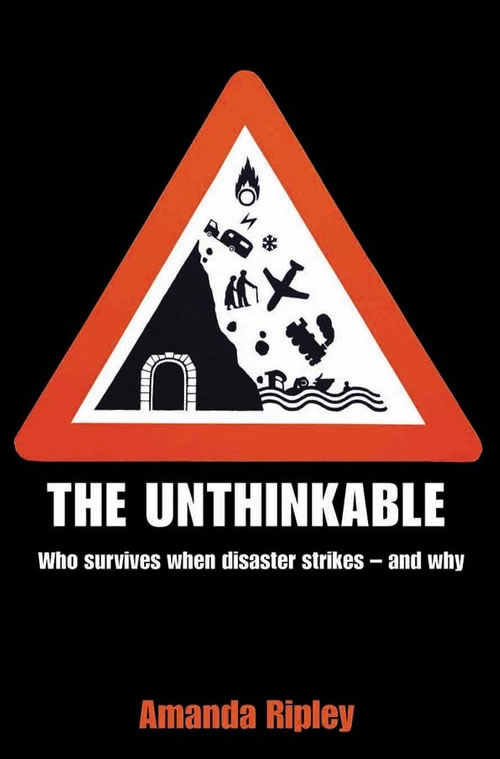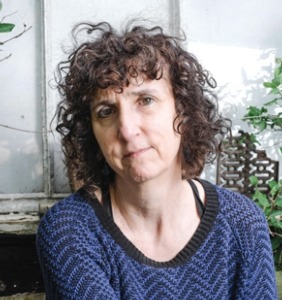The new book from Amanda Ripley, a senior staffer for Time magazine, focuses on how people react in the face of disasters from earthquakes to plane crashes, bomb attacks to floods. Her goal is to understand what “regular people” do before, during and after such events, and to help more of us survive them.
 Based on wide reading of the literature and detailed interviews with survivors, she produces a model of how those caught up in a disaster typically react, which challenges the commonsense view. When disaster strikes people’s initial response is often one of lethargy rather than “flight”. A study of World Trade Center survivors on 9/11 shows that they waited an average of six minutes before heading downstairs, wasting precious time shutting down computers and making calls. Evacuation took twice as long as the standard models had predicted. This fact alone proves the need for a book like this that attempts to dissect the actual behaviour of real people in the hope of reducing loss of life in the future.
Based on wide reading of the literature and detailed interviews with survivors, she produces a model of how those caught up in a disaster typically react, which challenges the commonsense view. When disaster strikes people’s initial response is often one of lethargy rather than “flight”. A study of World Trade Center survivors on 9/11 shows that they waited an average of six minutes before heading downstairs, wasting precious time shutting down computers and making calls. Evacuation took twice as long as the standard models had predicted. This fact alone proves the need for a book like this that attempts to dissect the actual behaviour of real people in the hope of reducing loss of life in the future.
In Ripley’s model the initial phase of lethargy and denial is in most cases followed by action. Eighty per cent of the population of New Orleans did heed the warnings and got out before Hurricane Katrina struck. What of the other 20 per cent? Arguing against the received wisdom that it was those who were too poor to leave who stayed, Ripley draws on survivors’ testimony to argue that in fact the issue was one of belief. Many who had survived other major hurricanes of the past in Louisiana felt they could survive Katrina too and ignored calls to evacuate. In the face of disasters experience, as Ripley shows, is not always the best teacher.
At other times it can be. People who have experienced disasters can become “disaster experts”, attuning themselves to strategies that might save them in future events (for example knowing where the exits are). Exposure to simulated stress situations can help. Fear produces cortisol which interferes with the part of our brain that handles complex thinking. When we are scared we often lose the ability to solve problems. Certain situational factors can turn fear into panic, but, far more often, can turn it into paralysis. The more prepared we are – by way of drills and training – the more control we experience, which lessens fear thereby improving performance.
In looking for practical explanations for behaviour Ripley interrogates a wide range of theoretical models such as those which stress brain functioning, individual beliefs, narratives and “thinking styles”, as well as exploring the role demographic and social factors play in dictating who is more likely to survive a disaster.
Running through The Unthinkable is a thread of ideological rationalism: Ripley evidently believes that we can control almost everything from our brains to our environment and therefore that death in a disaster should be avoidable, and would be if only we would listen closely to her. Since “disasters are predictable”, she argues, we should each develop “a statistically derived ranking of the hazards we actually face and a smart plan for dealing with them”. Is this realistic?
Yes, we do know where earthquake fault-lines lie, and can predict where quakes will happen, but only to within a 350-year window. At our all too human scale the idea that disasters are predictable and therefore controllable is a fallacy. Similarly, the literature on the crucial role played by specialists – such as flight attendants – in disaster management suggests that Ripley’s ideal of “regular people” taking responsibility for preventing their own deaths does not always hold water. Her call for each citizen’s brain to be trained through repeated rehearsals on the basis of the alliterative military adage that “proper prior planning and preparation prevents piss-poor performance” is admirable, but surely naïve. She calls for each of us to familiarise ourselves with the history and science of the main risks we face in order to “conduct a dress rehearsal for your brain”. Though it may seem counter-intuitive I don’t think she is right to say that “regular people” are primarily concerned with the risks they face.
In an unguarded moment Ripley contradicts her own case, recognising that “so much depends on the situation – and luck, of course.” As if to prove this: “Most of the people who died on 9/11 had no choices. They were above the impact zone of the planes and could not find a way out.” By way of contrast, of the thousands of people with access to open stairwells and the time to use them, only 135 did not escape. It was happenstance, not brain training, that made the difference.
In a book with such high ambitions overstretch is inevitable. Yet it achieves a great deal. Ripley’s survey of a vast area of research is impressively handled and eminently readable and, should disaster strike, the insights she provides into how you and those around you may respond might just save your life.
The Unthinkable is published by Random House

